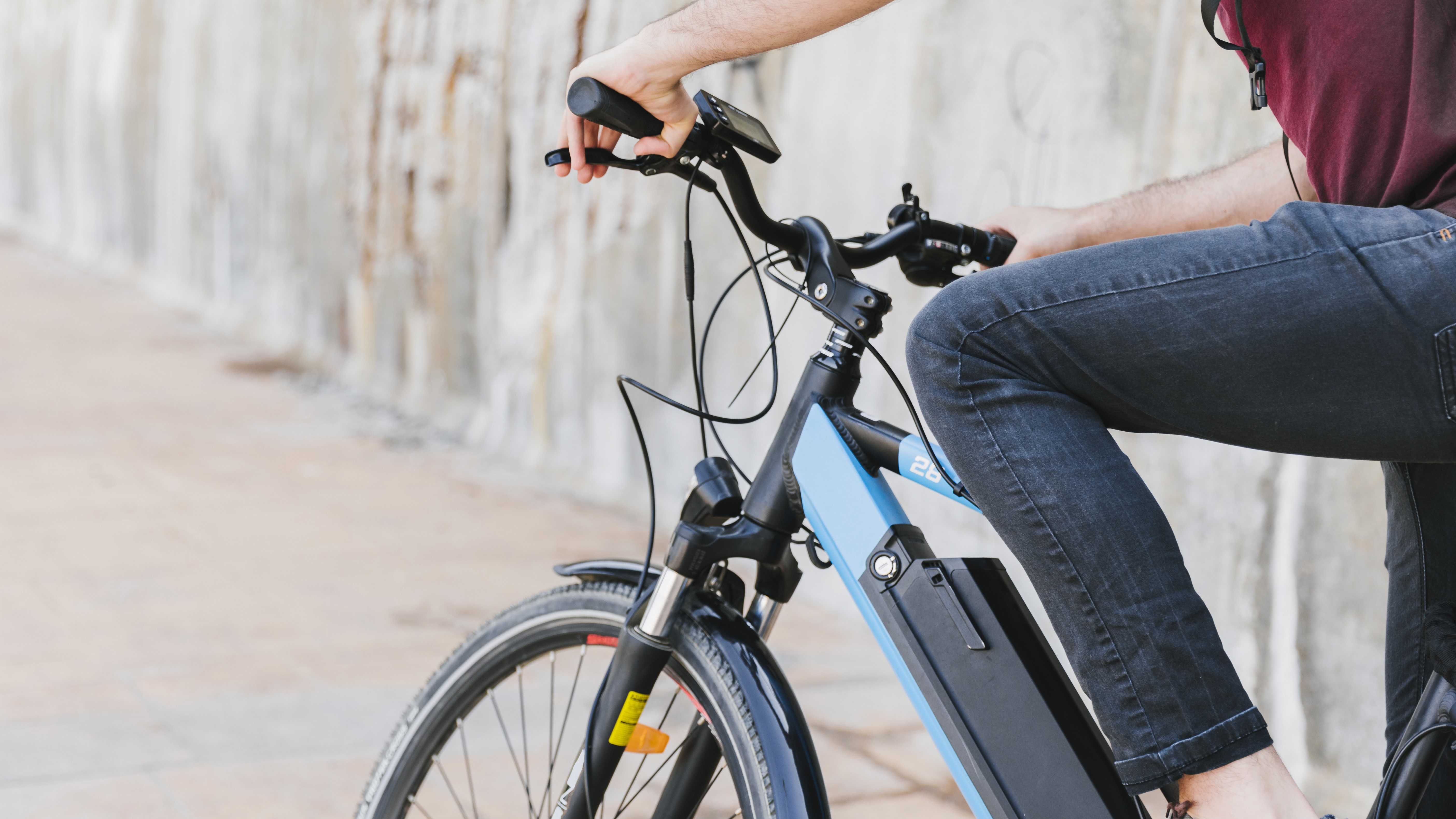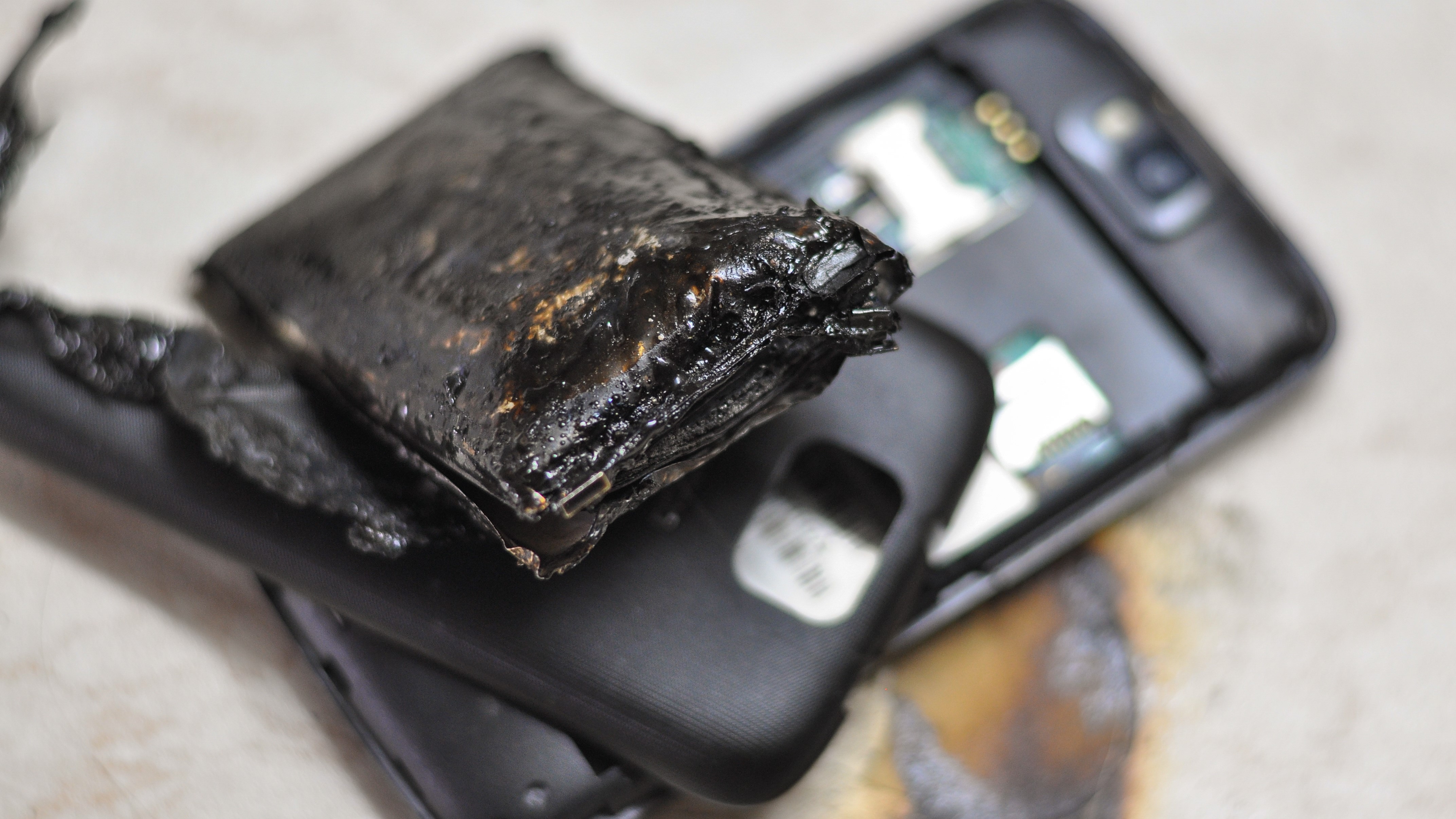E-bike fires: why they happen, and how you can prevent them

An electric bike can be a game-changer, taking the sweat out of cycling and reducing reliance on your car. However, although accidents are rare, and shouldn't put you off investing in an e-bike, the large lithium battery attached to its frame is a potential fire hazard if not treated with care.
Lithium batteries have a lot of advantages that make them ideal for e-bikes. They can be charged and discharged hundreds of times, they’re relatively lightweight and compact, and they contain lower levels of toxic heavy metals than many other types of batteries. Unfortunately, they can also be very flammable.
Why do e-bikes catch fire?
Lithium batteries like those used in e-bikes contain two electrodes, with an electrolyte fluid in between. As the battery is charged or drained, charged ions move from one electrode to the other.
Many e-bikes fires have resulted from those made with low quality components
Fire Protection Research Foundation
The electrolyte fluid is highly combustible, which isn’t normally an issue, but if the battery is damaged or overheated, the liquid can ignite. Once one battery cell overheats, the adjacent ones follow (a process called thermal runaway) and the heat and pressure soon becomes too much to contain, resulting in an explosion.
To find out why this happens, TechRadar spoke to the Fire Protection Research Foundation (a research affiliate of the National Fire Protection Association).
The foundation’s research project manager explained that lithium battery fires happen for a number of reasons, including: manufacturing defects; design flaws; improper use (eg placing a battery near a heat source or leaving it in intense sunlight for an extended period of time, which may lead to the battery overheating); penetrating a battery in a way that causes a short circuit; and using chargers not intended for the device.

These aren't issues that are exclusive to e-bikes - any device containing a lithium battery has the potential to catch fire, as we’ve seen with phones, laptops, and electric cars.
Sign up for breaking news, reviews, opinion, top tech deals, and more.
Hoverboards are perhaps the most infamous example. The US Consumer Product Safety Commission (CPSC) is aware of over 250 incidents related to fires or overheating since 2015, when hoverboards started to become popular. Major airlines banned hoverboards from commercial flights, and stores including Amazon, Overstock and Toys R Us suspended sales.
Hoverboards were particularly susceptible because they were so new, there were no design standards that stipulated the use of safety measures like holes to vent excess pressure, or separators that act as a fuse and shut down the cell above a certain temperature. Nor were they subject to strict testing before being sold to the public, unlike other devices containing lithium batteries.

The US Consumer Product Safety Commission swiftly implemented a safety standard for hoverboards and although they’re still not permitted on planes, hoverboards soon returned to store shelves.
E-bikes have been around for much longer, and standards for them are more established, but the Fire Protection Research Foundation explains that bikes involved in fires are often poorly built:
“According to anecdotal reporting from some fire departments, such as FDNY, many e-bikes fires have resulted from those made with low quality components (eg batteries made with inadequate quality control or products that have not been certified by an independent testing laboratory).”
How to prevent e-bike fires
In addition to buying an e-bike from a reputable manufacturer that complies with the appropriate safety standards, there are also measures you should take to take care of your e-bike and avoid fires
To find out what you should do, we spoke to Richard Thorpe, founder and CEO of Gocycle - the company behind our current top-rated e-bike, the Gocycle G4. He gave the following advice:
- Read the owner's manual and adhere to manufacturer precautions
- Only use the charger supplied by the brand that matches the battery
- Do not use power patch leads; only plug the charger directly into the wall mains supply
- Make sure you have a smoke detector in the area where you charge your e-bike and that you can hear it - for example, if you are charging your e-bike in a garage or garden shed, make sure you have a smoke detector fitted there and can hear it from your house
- If your battery or e-bike has been involved in a flooding event, consider it permanently damaged and do not charge it. Recycle it responsibly
Thorpe also suggests you consider recycling your e-bike’s battery after five years, regardless of usage. “E-bike technology is changing and improving every year,” he said.

“Gocycle provides a Responsible Battery Recycling coupon that can be used towards the purchase of a new replacement lithium battery for owners that can demonstrate that they have recycled their old lithium battery."
if you are charging your e-bike in a garage or garden shed, make sure you have a smoke detector fitted there and can hear it from your house
Richard Thorpe, CEO, Gocycle
Finally, he warns against keeping old lithium-ion batteries in your house - whether they’re e-bike batteries or not. Instead, recycle them responsibly.
The National Fire Protection Association has its own safety tip sheet on lithium-ion battery safety, which provides information on safe use of products powered by lithium-ion batteries, along with guidance on what to do if a lithium-ion fire occurs. It also offered the following specific guidance for e-bike owners:
- Do not use aftermarket batteries
- Always use the manufacturer’s cord and power adapter made specifically for the device
- Do not leave e-bikes unattended while they’re charging
- Don’t leave e-bikes charging overnight
- Store batteries and devices at room temperature. Extreme hot or cold temperatures can harm the battery. Placing them in direct sunlight is also not recommended
- Do not leave an e-bike (or similar device) in a child’s room
- Do not block your primary way into and out of the building with an e-bike (or similar device)
What to do if a fire occurs
Pay attention to your e-bike's battery, and you might be able to spot signs of danger before a fire happens. If there's a strange smell, a change in shape, leaking, an odd noise, or it feels too hot, the NFPA advises moving it away from anything else that could catch fire, if possible, and call the fire service,
If a fire does happen, don't try to tackle it yourself; lithium battery fires are particularly dangerous, as the battery casing can explode at high temperatures, putting you at risk of flying debris. Instead, evacuate the area immediately and call the emergency services.
The risk of a fire is small if you take care to follow the safety guidance above, and it certainly shouldn't put you off purchasing an e-bike, but if it does happen, it's a job for the professionals.

Cat is TechRadar's Homes Editor specializing in kitchen appliances and smart home technology. She's been a tech journalist for 15 years, having worked on print magazines including PC Plus and PC Format, and is a Speciality Coffee Association (SCA) certified barista. Whether you want to invest in some smart lights or pick up a new espresso machine, she's the right person to help.